Astronaut Food
New zine! “Astronaut Food” is a mini zine about freeze-dried food that astronauts eat in outer space.
The zine includes history about developing food for NASA missions. The back side of the zine (when unfolded) shows vintage Tang ads and a list of sources.
If it’s giving Bill Nye episode, that’s my intent. 😉
I made a collage using space imagery for the background of the zine. All text is typed.
Copies are available in my Etsy shop (U.S. only), and I’m also open to trades.
See below for photos and full text of the zine.
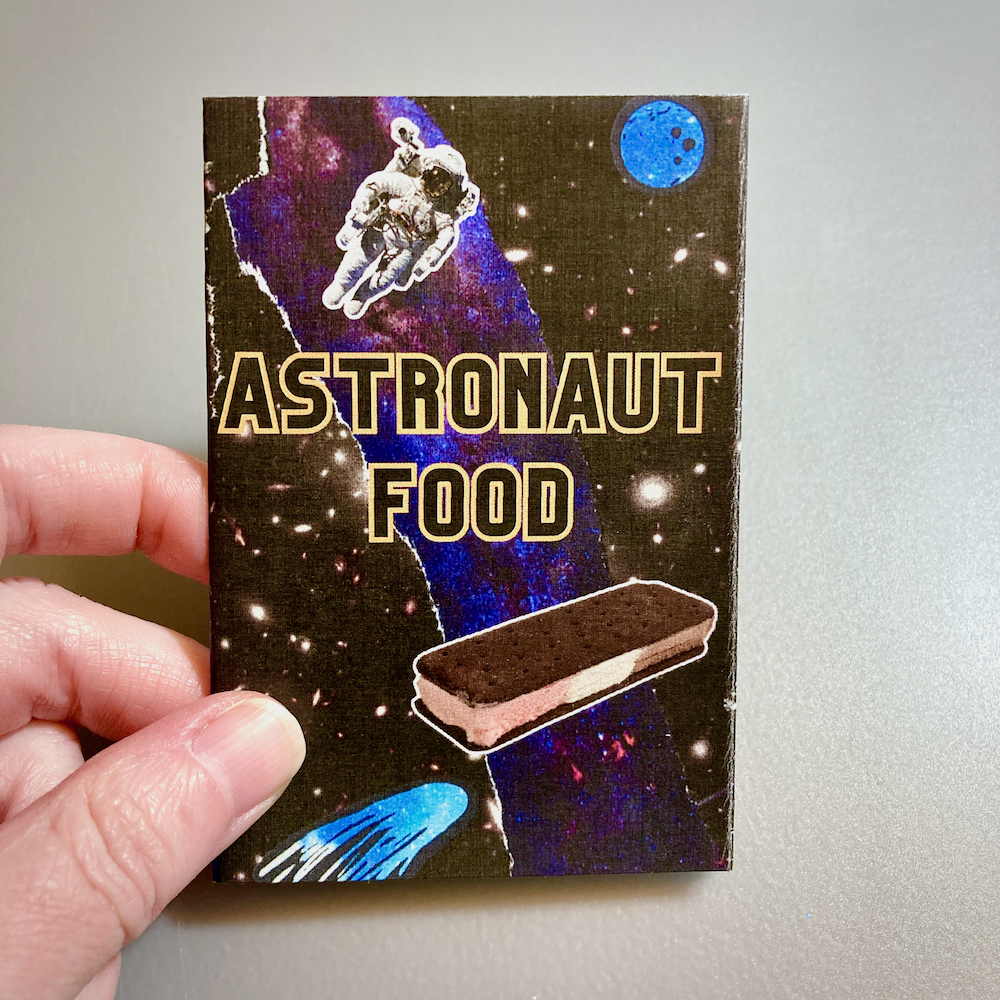
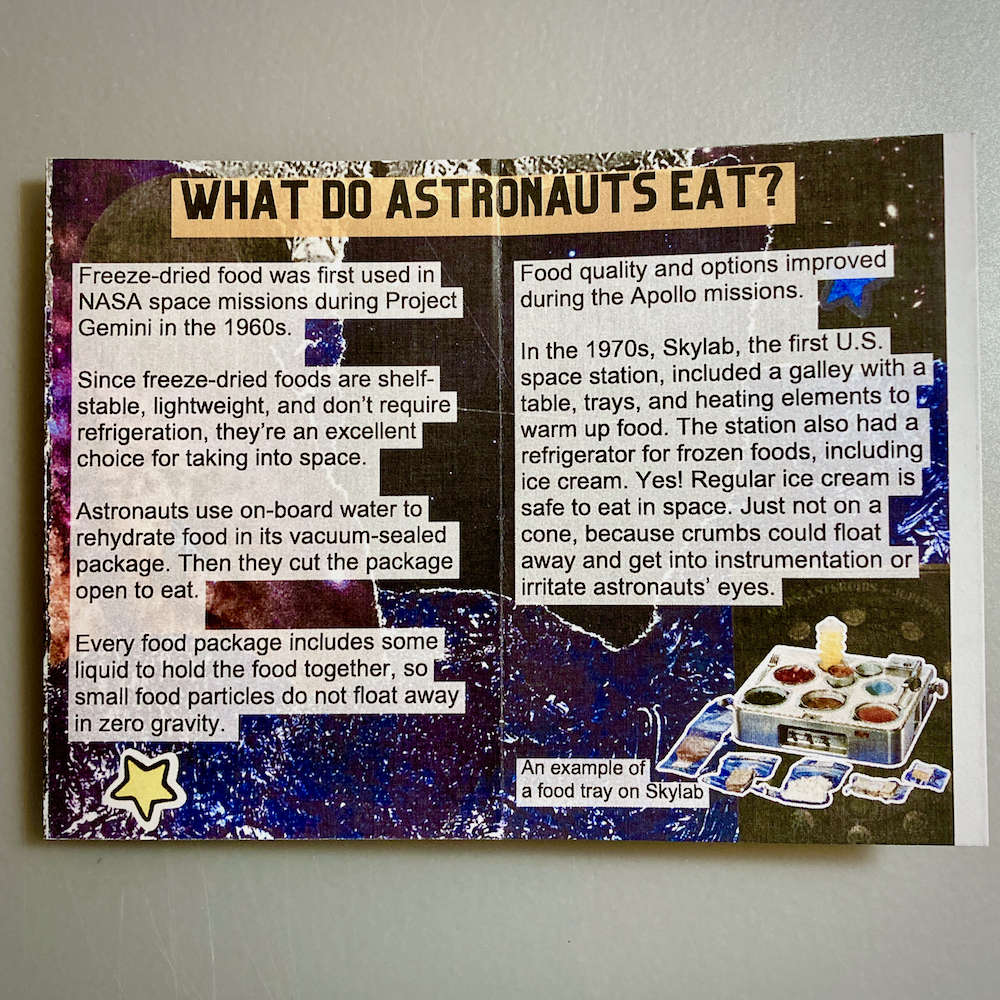
What do astronauts eat?
Freeze-dried food was first used in NASA space missions during Project Gemini in the 1960s.
Since freeze-dried foods are shelf- stable, lightweight, and don’t require refrigeration, they’re an excellent choice for taking into space.
Astronauts use on-board water to rehydrate food in its vacuum-sealed package. Then they cut the package open to eat.
Every food package includes some liquid to hold the food together, so small food particles do not float away in zero gravity.
Food quality and options improved during the Apollo missions.
In the 1970s, Skylab, the first U.S. space station, included a galley with a table, trays, and heating elements to warm up food. The station also had a refrigerator for frozen foods, including ice cream. Yes! Regular ice cream is safe to eat in space. Just not on a cone, because crumbs could float away and get into instrumentation or irritate astronauts’ eyes.
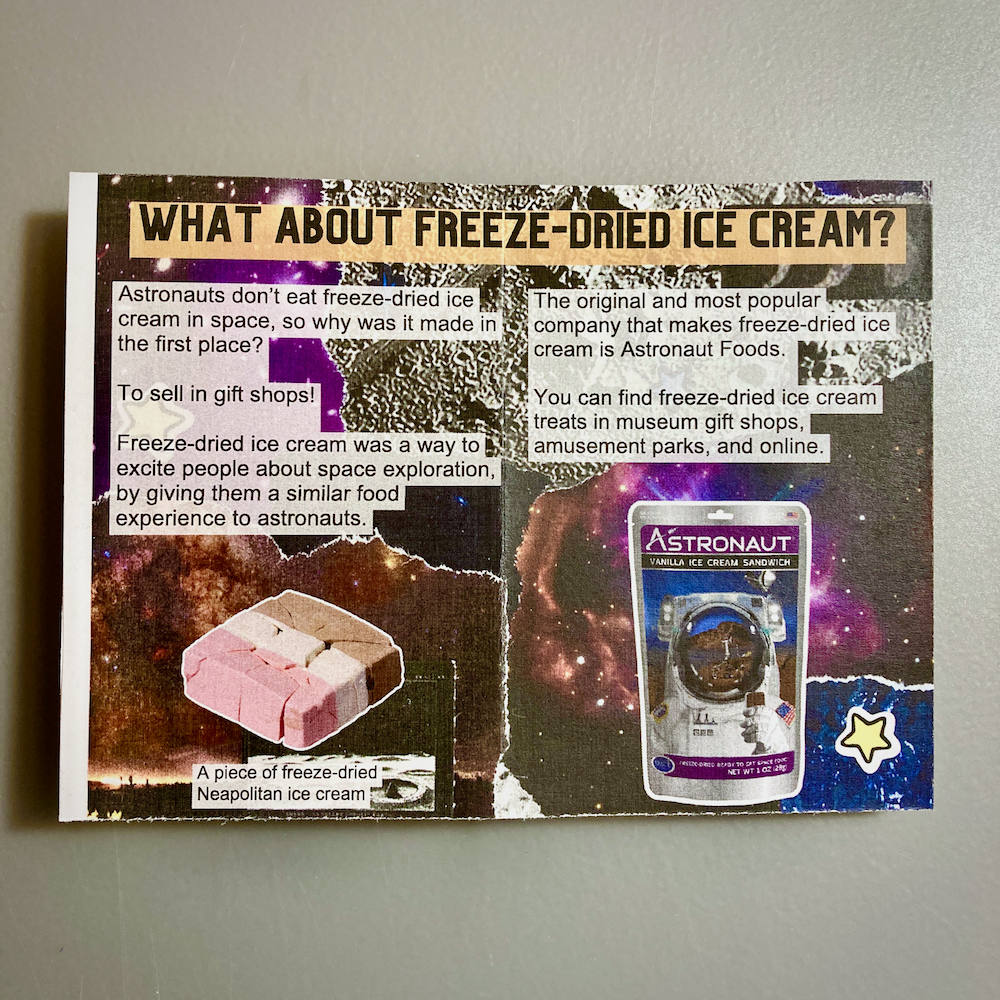
What about freeze-dried ice cream?
Astronauts don’t eat freeze-dried ice cream in space, so why was it made in the first place?
To sell in gift shops!
Freeze-dried ice cream was a way to excite people about space exploration, by giving them a similar food experience to astronauts.
The original and most popular company that makes freeze-dried ice cream is Astronaut Foods.
You can find freeze-dried ice cream treats in museum gift shops, amusement parks, and online.
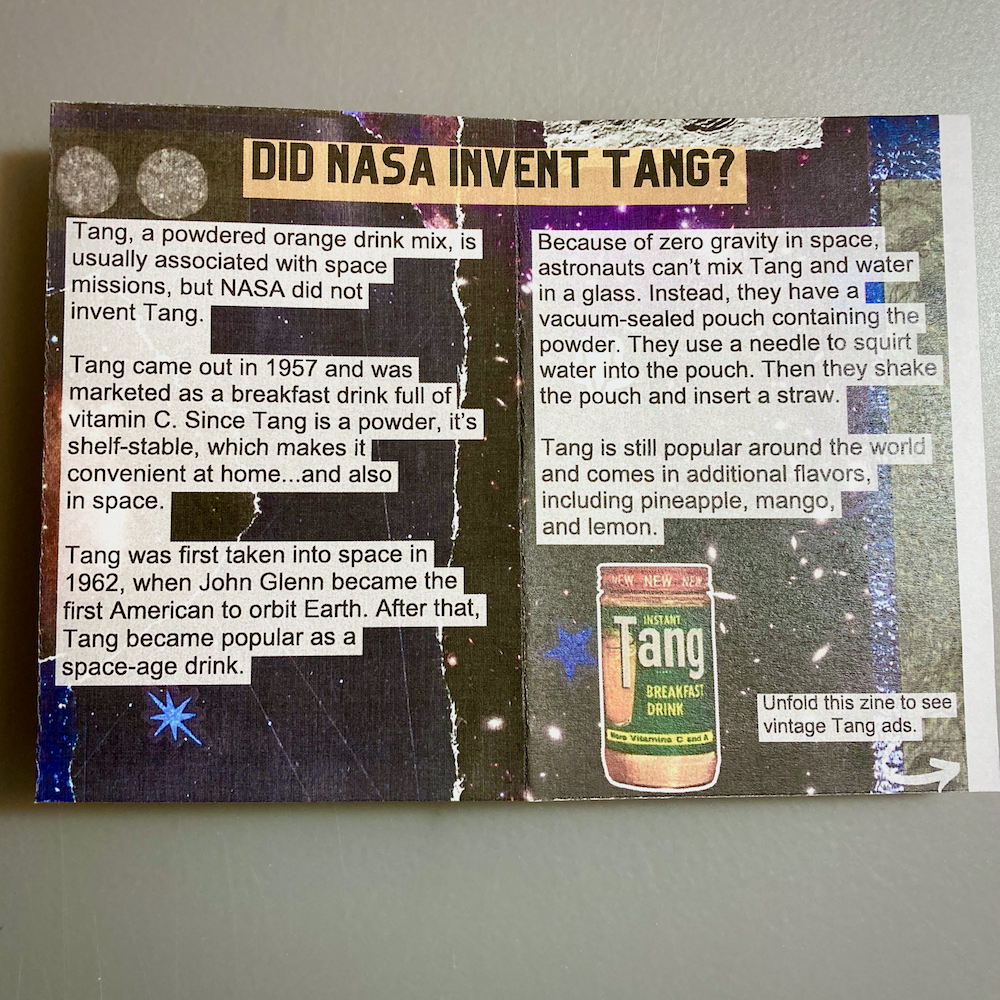
Did NASA invent Tang?
Tang, a powdered orange drink mix, is usually associated with space missions, but NASA did not invent Tang.
Tang came out in 1957 and was marketed as a breakfast drink full of vitamin C. Since Tang is a powder, it’s shelf-stable, which makes it convenient at home…and also in space.
Tang was first taken into space in 1962, when John Glenn became the first American to orbit Earth. After that, Tang became popular as a space-age drink.
Because of zero gravity in space, astronauts can’t mix Tang and water in a glass. Instead, they have a vacuum-sealed pouch containing the powder. They use a needle to squirt water into the pouch. Then they shake the pouch and insert a straw.
Tang is still popular around the world and comes in additional flavors, including pineapple, mango, and lemon.
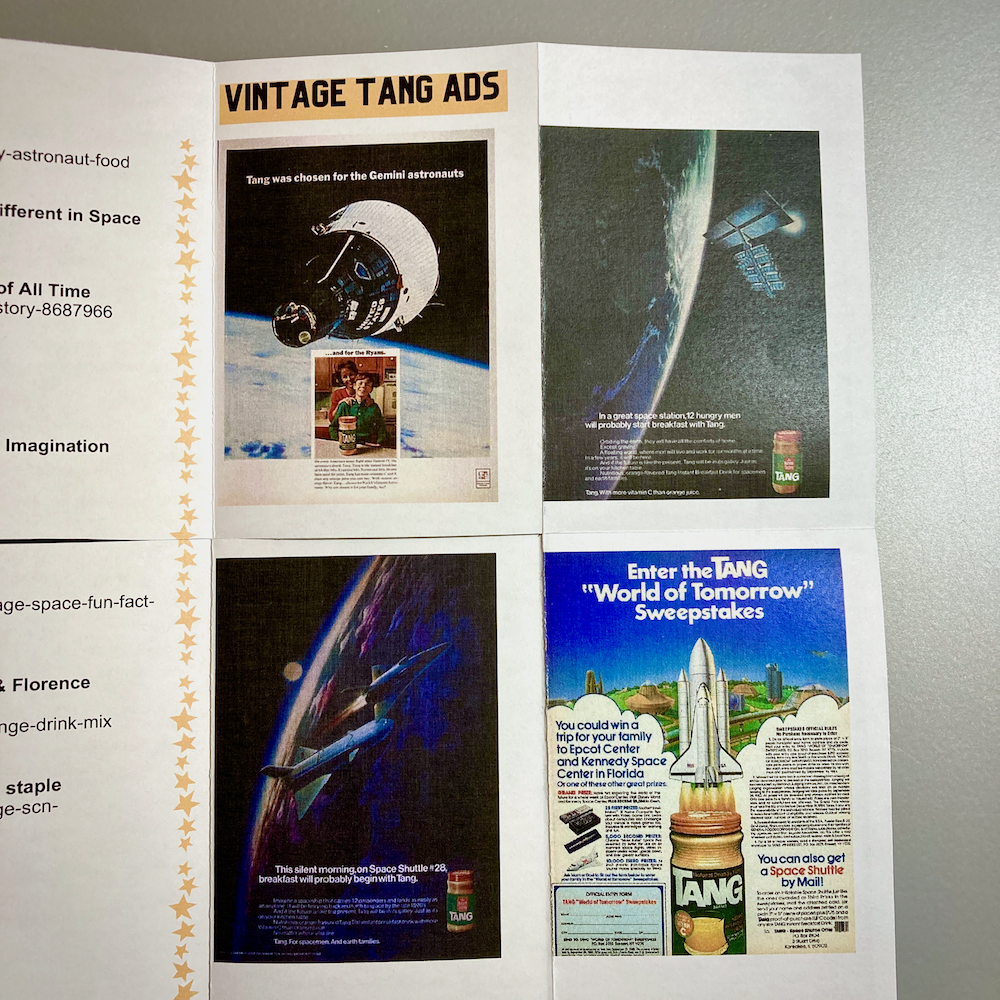
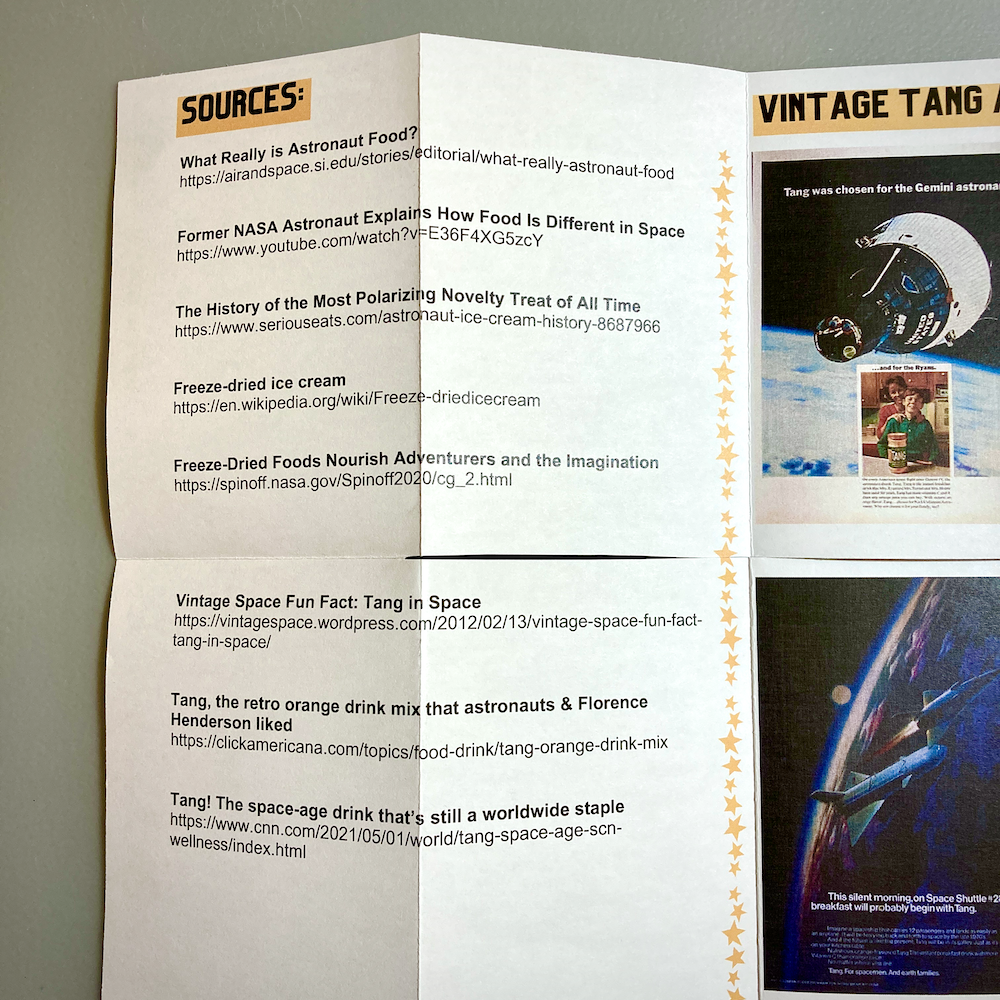
Sources
What Really is Astronaut Food?
Former NASA Astronaut Explains How Food Is Different in Space
The History of the Most Polarizing Novelty Treat of All Time
Freeze-Dried Foods Nourish Adventurers and the Imagination
Vintage Space Fun Fact: Tang in Space
Tang, the retro orange drink mix that astronauts & Florence Henderson liked